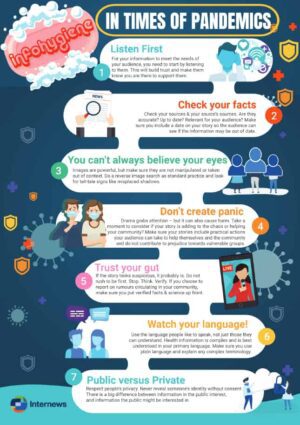Read the Report
1. Listen First
For your information to meet the needs of your audience, you need to start by listening to them. This will build trust and make them know you are there to support them.
2. Check your facts
Check your sources & your source’s sources. Are they accurate? Up to date? Relevant for your audiences? Make sure you include a date on your story so the audience can see if the information may be out of date.
3. You can’t always believe your eyes
Images are powerful, but make sure they are not manipulated or taken out of context. Do a reverse image search as standard practice and look for tell-tale signs like misplaced shadows.
4. Don’t create panic
Drama grabs attention – but it can also cause harm. Take a moment to consider if your story is adding chaos or helping your community? Make sure your stories include practical actions your audience can take to help themselves and the community and do not contribute to prejudice towards vulnerable groups.
5. Trust your gut
If the story looks suspicious, it probably is. Do not rush to be the first. Stop. Think. Verify. If you choose to report on rumours circulating in your community, make sure you put verified facts & science up front.
6. Watch your language
Use the language people like to speak, not just those they can understand. Health information is complex and is best understood in your primary language. Make sure you use plain language and explain any complex terminology.
7. Public versus Private
Respect people’s privacy. Never reveal someone’s identity without consent. There is a big difference between information in the public interest, and information the public might be interested in.
